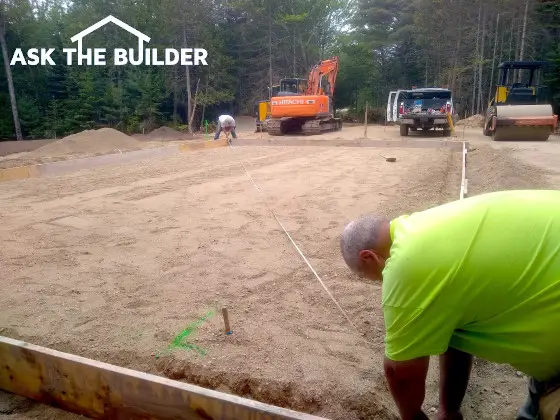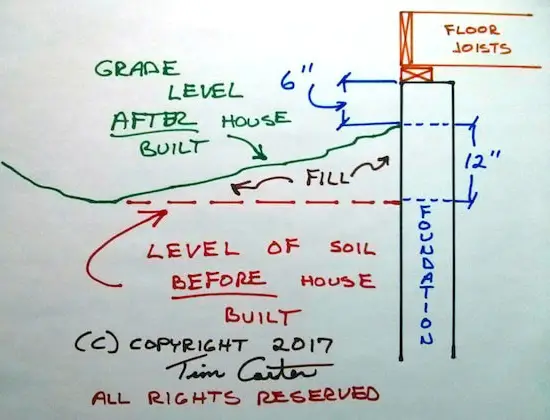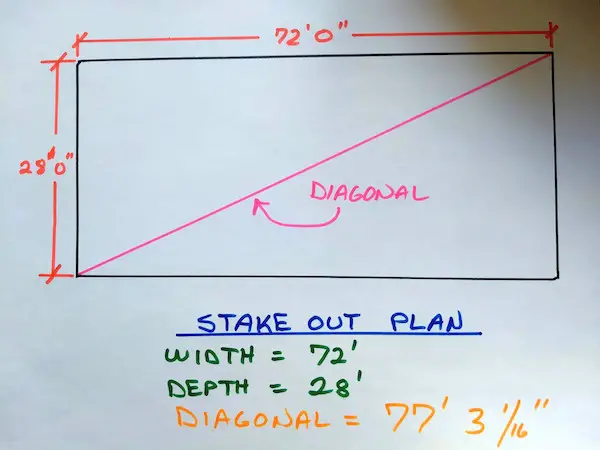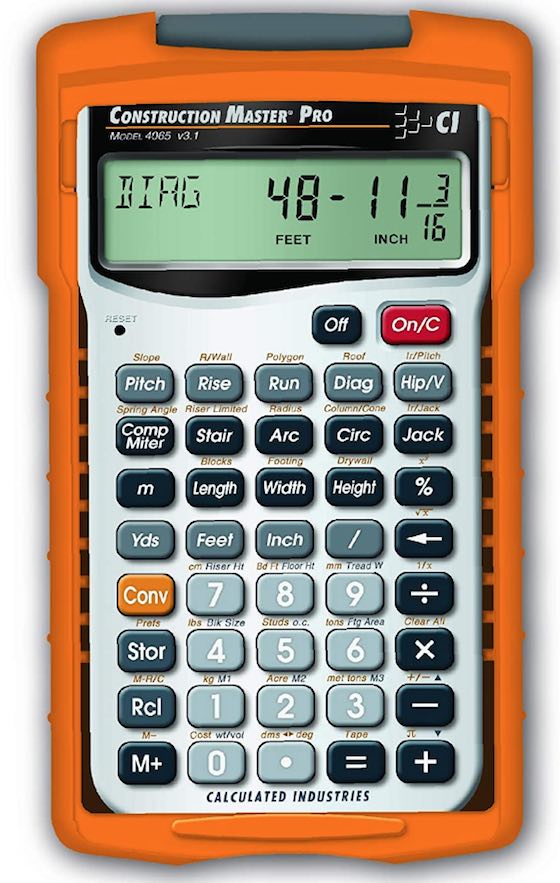How to Square a Building

How to Square a Building | These two men are checking the diagonal measurement for the forms for a concrete slab. They want to make sure it’s square. Copyright 2021 Tim Carter
How to Square a Building
Last week, a 75-year-old man submitted a question on the Ask Tim page of my AsktheBuilder.com website. I get quite a few each week and answer each one. This particular question put a huge smile on my face because it screamed “ATTITUDE”.
Connie, yes it can be a name for a man, said, “I am going to attempt to build my home myself using some subs to do various work. I am going to do the footing and foundation. How do I lay out my batter boards with a string line to make sure my piers are all straight and in line?"
Can you imagine the excitement he’s feeling about starting this project? Don’t you love a positive attitude like this? To be sure it needs to be mixed with realism as to what he can do physically. I was immediately reminded of Harry Andrews who build the one-of-a-kind Loveland Castle along the banks of the Little Miami River in a suburb of Cincinnati, Ohio.
Harry set a goal in 1927 nearly a decade after serving in World War I. He decided to build the massive castle and continued to add stone after stone until his death in 1981. While Connie’s house dream is much more modest, I admire people who set goals and do their best to achieve them. We should all take a lesson from Connie and Harry!
Connie asked a few of the right questions but he didn’t touch on a few really important ones about what needs to be done when you decided to build a foundation. Let’s start to unpack the process and I’ll share some of the common pitfalls I see many professional builders make.
Why is Foundation Height Important?
The height of the foundation is perhaps one of the most important things to consider. All too often I do autopsies on water-infiltration issues homeowners suffer because the top of their house foundation is too close to the ground surrounding the house. Drive through some older neighborhoods in your city or town and it’s not uncommon to see the top of the foundation 30, or more, inches up out of the ground! Click or tap here to discover so much more about foundation height and why it's so very important.
CLICK or TAP HERE to get FREE BIDS from local foundation contractors who can get things square.
How High Should A Foundation Be Above Ground?
The building code, which happens to be a set of minimum standards, states that the top of the foundation must be no less than 4 or 6 inches above the ground that touches the foundation. But wait, there’s more! The ground must then slope away from the foundation a minimum of 6 inches within the first 10 feet of horizontal distance from the foundation. Confused?

What this means is that your foundation should simply mimic the top of a hill where all the ground around the foundation slopes away so you have great water drainage and surface water doesn’t flow towards the house. Remember, the numbers above are minimum requirements. You can create more fall if you want.
How Do You Square a Foundation or Wall?
In my opinion, the next most important step is to make sure the foundation is square. Connie didn’t mention this, but I’m sure he’s aware of it. You were taught how to do this all those years ago in high school geometry class. Remember when you grumbled under your breath sitting at your desk saying, “When am I EVER going to use this silly formula about right triangles?” Well, today is the day.
The really amazing thing about this is you don’t need to know any math at all to get a rectangle square. After all, a rectangle is simply two identical right triangles smashed up against one another. Here’s what Connie, or you, need to do to get the batter boards or form boards for a foundation square.
The first step is to make sure the measurements of the opposites sides of each leg of the rectangle, or even a square, are the same. For example, if Connie’s house slab measures 45 feet by 28 feet, then he needs to make sure the two opposing form boards do measure 28 feet and the other two are exactly 45 feet. That’s easy to check.
You then make sure all four sides are straight. Now you stretch a tape across the diagonals of the rectangle and see what the measurements are. If you’re lucky, they’ll measure exactly the same. This means the form is perfectly square as you’ve got two identical right triangles.

That diagonal will be the same for the opposite two corners when the rectangle is square. Can you see you have two identical right triangles stacked on top of one another? It's best to create one of these simple drawings before you get out to the job site. Double-check the diagonal calculation. TAP THE IMAGE to get the cool calculator I use to do this.
But if the diagonal measurements are different, you need to pull one side of the forms so the one diagonal measurement shortens. Have someone hold the opposite side of the forms so they don’t move while you pull. As this happens, the short diagonal measurement will automatically lengthen. You don’t need to have a calculator or know any algebra. It’s magic! You can do the same thing to get frame walls, or decks, or anything square.
But if you do want a fantastic construction calculator that will rapidly calculate the diagonal measurement, CLICK or TAP HERE. Get any of the ones made by Calculated Industries.

This is a superb construction calculator. I've had tremendous success with Calculated Industries products. CLICK or TAP on the calculator to have it in your hands in days.
Connie needs to make sure the top of his foundation or piers is level. This is accomplished using a traditional builder’s transit or a newer fancy laser level.
As for getting piers in line, just stretch a mason’s string tightly across boards set away from the foundation corners. Be sure the string represents the outer face or center of the piers and you just use a level to plumb down to ensure the pier forms are where they need to be. I’ve got much more about all this in past columns on my website. Go check them out for more hidden building secrets.
Column 1410